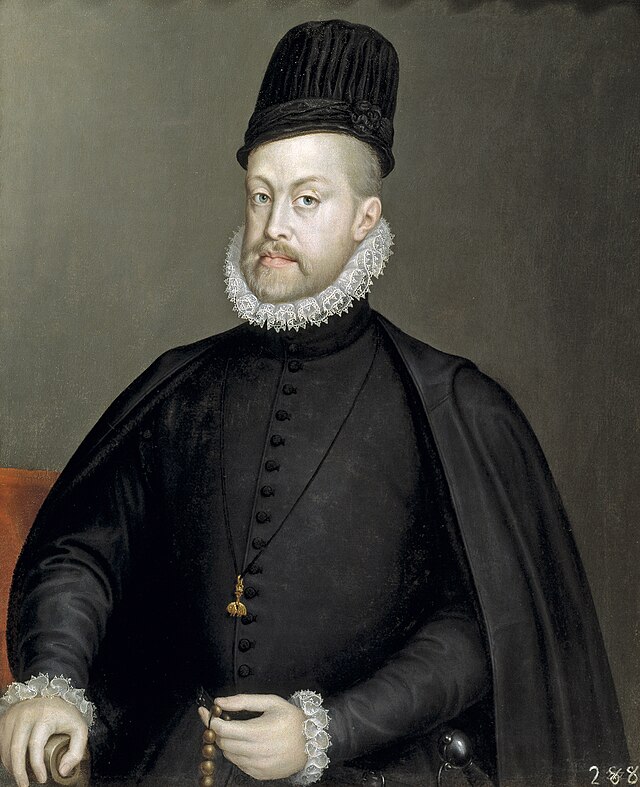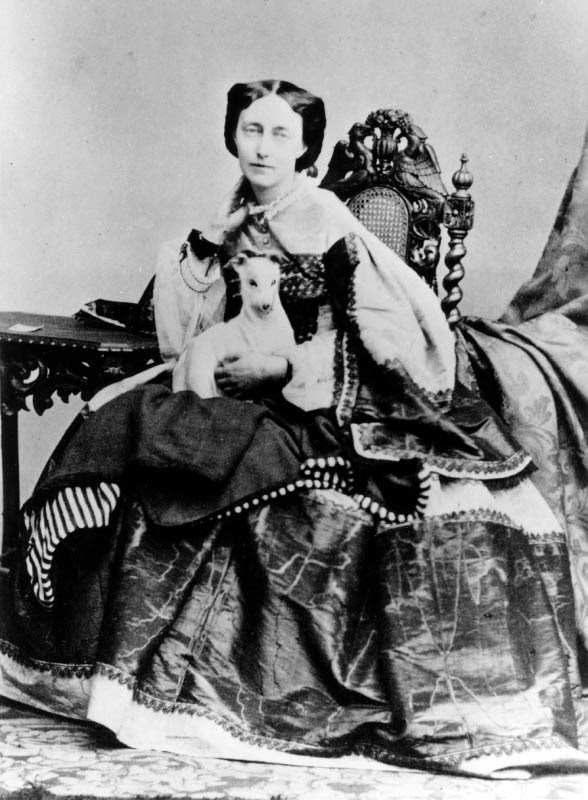© Unofficial Royalty 2024

King Henri III of France, Credit – Wikipedia
September 19, 1551 – Birth of King Henri III of France at the Château de Fontainebleau in Fontainebleau, France
Full name: Alexandre Édouard
Henri was a Catholic military leader in the French Wars of Religion – Catholics against the Protestant Huguenots – and helped plot the St. Bartholomew’s Day Massacre of August 23-24, 1572 in which 5,000 to 30,000 Protestant Huguenots were killed. The reigns of Henri and his two brothers saw France in constant turmoil over religion. In 1574, 23-year-old Charles IX, King of France died from tuberculosis without a male heir and so his brother succeeded him as Henri III, King of France. In 1589, Henri was assassinated by a fanatic Dominican monk who believed Henri was the enemy of Catholicism.
Unofficial Royalty: King Henri III of France
September 19, 1785 – Death of Maria Antonia Ferdinanda of Spain, Queen of Sardinia, wife of Vittorio Amadeo III, King of Sardinia at the Castle of Moncalieri in Turin, Kingdom of Sardinia, now in Italy; buried at the Royal Basilica of Superga in Turin
In 1750, Maria Antonia Ferdinanda married the future Vittorio Amedeo III, King of Sardinia. The marriage was arranged by Maria Antonia’s half-brother Fernando VI, King of Spain to strengthen relations between Spain and Sardinia/Savoy. Maria Antonia Ferdinanda and Vittorio Amedeo had twelve children.
Unofficial Royalty: Maria Antonia Ferdinanda of Spain, Queen of Sardinia
September 19, 1802 – Death of Luisa of Naples and Sicily, first wife of Ferdinando III, Grand Duke of Tuscany at Hofburg Palace in Vienna, Austria; buried at the Imperial Crypt in Vienna, Austria
Luisa was the daughter of King Ferdinando IV of Naples and III of Sicily, later Ferdinando I, King of the Two Sicilies, and his first wife Archduchess Maria Carolina of Austria. In 1790, she married Ferdinando III, Grand Duke of Tuscany and the couple had five children. In 1801, Napoleon conquered Tuscany, Ferdinando was forced to leave Tuscany, and his family went into exile in Vienna, Austria. While the family was in exile in Vienna, Austria, Luisa, aged 29, died in childbirth delivering a stillborn son on September 19, 1802, at Hofburg Palace. After Napoleon’s downfall in 1814, Tuscany was restored to Ferdinando
Unofficial Royalty – Luisa of Naples and Sicily, Grand Duchess of Tuscany
September 19, 1803 – Birth of Maria Anna of Savoy, Empress of Austria, wife of Emperor Ferdinand I of Austria, at the Palazzo Colonna in Rome, Papal States, now in Italy
Full name: Maria Anna Ricciarda Carolina Margherita Pia
Maria Anna and her twin sister Maria Teresa were the daughters of Vittorio Emanuele I, King of Sardinia and Duke of Savoy. In February 1831, Maria Anna married Emperor Ferdinand I of Austria. The marriage was childless and probably never consummated, but the couple remained devoted to each other. Emperor Ferdinand suffered from several ailments including epilepsy and hydrocephalus. He was considered incapable of ruling although he kept a coherent diary.
Unofficial Royalty: Maria Anna of Savoy, Empress of Austria
September 19, 1803 – Birth of Maria Teresa of Savoy, Duchess of Parma, wife of Carlo II Ludovico, Duke of Parma, at the Palazzo Colonna in Rome, Papal States, now in Italy
Full name: Maria Teresa Fernanda Felicitas Gaetana Pia
Maria Teresa and her twin sister Maria Ann were the daughters of Vittorio Emanuele I, King of Sardinia and Duke of Savoy. In 1820, Maria Teresa married the future Carlo II Ludovico, Duke of Parma, and the couple had two children. Carlo Ludovico had no interest in reigning. He left the duchy in the hands of his government ministers and instead traveled around Europe. Maria Teresa left the court and settled at the Villa delle Pianore in the Duchy of Lucca. Maria Teresa surrounded herself with priests and nuns and dedicated her life to religion. After 1840 she lived in complete religious seclusion.
Unofficial Royalty: Maria Teresa of Savoy, Duchess of Parma
September 19, 1895 – Death of Countess Julia Hauke, Princess of Battenberg, morganatic wife of Prince Alexander of Hesse and by Rhine, at Heiligenberg Castle in Jugenheim, Grand Duchy of Hesse and by Rhine, now in Hesse, Germany; first buried in the mausoleum at Heiligenberg Castle, after the mausoleum was converted to a memorial chapel, her remains were moved to a grave outside the mausoleum
Julia Hauke was the wife of Prince Alexander of Hesse and by Rhine, the founder of the Battenberg/Mountbatten branch of the Grand Ducal family of Hesse and by Rhine. As her marriage was morganatic, Julia did not become a Princess of Hesse and by Rhine. Instead, her brother-in-law, Grand Duke Ludwig III of Hesse and by Rhine, created her Countess of Battenberg, with the style Illustrious Highness. Her children took their titles from her, becoming Counts and Countesses of Battenberg. Seven years later, the Grand Duke elevated Julia and her children to the rank of Prince/Princess, with the style Serene Highness. However, they remained ineligible for the Grand Ducal throne. Julia and Alexander’s son Henry married Queen Victoria’s daughter Princess Beatrice and through this marriage, they are ancestors of the Spanish royal family. Their son Louis married Queen Victoria’s granddaughter Princess Victoria of Hesse and by Rhine. Louis and Victoria were the grandparents of Prince Philip, Duke of Edinburgh and the future monarchs of the United Kingdom will be their descendants.
Unofficial Royalty: Countess Julia Hauke, Princess of Battenberg
September 19, 1902 – Death of Queen Marie Henriette of Belgium, born Marie Henriette of Austria, wife of King Leopold II of the Belgians, at the Hôtel du Midi in Spa, Belgium; buried at the Church of Our Lady of Laeken in Brussels, Belgium
In 1853, 16-year-old Marie Henriette married 18-year-old Prince Leopold, Duke of Brabant, the heir to the Belgian throne, and the future King Leopold II of the Belgians. The marriage had been carefully orchestrated to strengthen the infant Belgian monarchy by marrying its future second monarch to a member of a prestigious Catholic dynasty. Marie Henriette had tearfully protested the marriage. The marriage started out unhappy, remained unhappy, and the couple lived mostly separate lives. Leopold had many mistresses and made no real attempt to have a successful marriage. After the death of their only son, Marie Henriette gave birth to a third daughter. The couple completely separated after the birth and Marie Henriette eventually moved to Spa, Belgium where she lived out the rest of her life at Hôtel du Midi, the home she had bought there.
Unofficial Royalty: Marie Henriette of Austria, Queen of Belgium
This article is the intellectual property of Unofficial Royalty and is NOT TO BE COPIED, EDITED, OR POSTED IN ANY FORM ON ANOTHER WEBSITE under any circumstances. It is permissible to use a link that directs to Unofficial Royalty.









